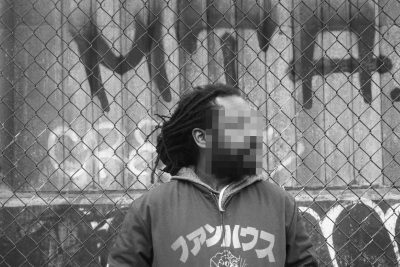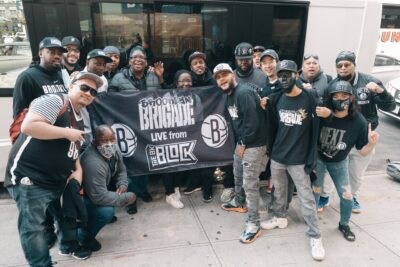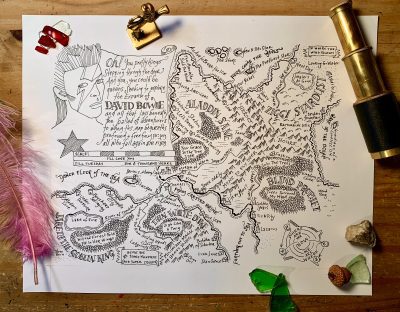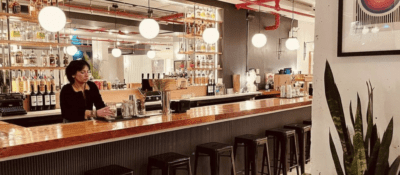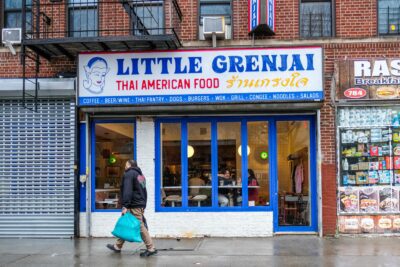Zimmerman's portraits on the wall at Cafe Nube (Courtesy Rusty Zimmerman)
Free Portrait Project shines a light on South Brooklyn, one painting at a time
Rusty Zimmerman is on a self-assigned mission to create a pastiche of South Brooklyn by painting 200 portraits of ordinary residents
“Are you hydrated? Hungry? Caffeinated?”
This is how artist Rusty Zimmerman greets Stanley Delva as he leads the 30-year-old grants writer to where he’ll sit for a portrait in a spacious and sunny second-floor studio in Industry City. Delva is not a celebrity or politician. The fact that he is a regular person living in South Brooklyn is exactly what makes him special enough to qualify for the Free Portrait Project.
The goal is to paint 200 portraits of South Brooklynites by the end of 2023. But in early June, Zimmerman is a little behind schedule as he sits to paint Delva. The two chat about life in the Flatlands neighborhood of Brooklyn as Zimmerman paints. Delva, who is Haitian — and the 69th person to sit for Zimmerman’s Free Portrait Project — says he signed up because it seemed like a cool thing. Like most of Zimmerman’s subjects, it’s his first time having a portrait done and also because he liked the idea of conserving his time in South Brooklyn and “being part of a project that’s a declaration of ‘I was here. I am here.’”
The Free Portrait Project is a Brooklyn initiative founded by Zimmerman, who is not quite halfway through painting 200 portraits of South Brooklyn residents absolutely free of charge. The space is subsidized, and all of Zimmerman’s tools — his paints and brushes and canvases — are crowdfunded or sponsored. He records his conversations with his subjects, and will later edit his own voice out so that what’s left is an oral history of the person in the portrait. Throughout the year, the portraits will be on display at various venues in Brooklyn, and the plan is to exhibit all 200 sometime in 2024. Following the exhibition, each of the subjects will get to take home their very own hand-painted portrait.
Although Zimmerman has always been interested in painting pictures and in portraiture specifically — “I prefer to paint from life so that I have someone to hang out with while I work” — this project, and the one preceding it, was born, in part, because he wanted to be a better painter. His formal training includes illustration study at the California College of the Arts. As his skills grew, Zimmerman’s appreciation for the way in which this type of work could foster human connection grew as well.
Free portraiture at scale
This is technically Zimmerman’s second foray into free portraiture at scale. In 2016, he painted 200 portraits of Crown Heights’ area residents; the full collection was featured at the Brooklyn Children’s Museum. This time around, the 44-year-old Louisiana-born, Brooklyn-based artist has expanded his reach, and now anyone living in (or affiliated with) South Brooklyn can apply to have their portrait painted and their oral history recorded. (Interested? Check out Zimmerman’s website.)
Applicants are chosen throughout the year so that it’s not just the first 200 people who hear about the project, explains Zimmerman. Since not everyone who applies and lives within the designated South Brooklyn bounds will get an opportunity to sit for a portrait, in every session, Zimmerman leaves the studio for two minutes so that his subjects can be recorded in private sharing with others what the experience, this “rare, antiquated thing” is like. So while only 200 South Brooklyn residents will be painted, the reach of the project aims to go much further.
Ron Schweiger, Brooklyn’s official historian, calls the project “fascinating,” and says that by choosing to focus on those individuals who aren’t “much known” in the community, who are “living their lives” in neighborhoods that people aren’t aware of, it’s shining a light on some lesser-known parts of the borough.
The portraiture medium is notable because “it brings the individual alive to the community,” says Schweiger, adding that the oral histories will also expose some of these less-talked about neighborhoods. “Everybody has their own story,” Schweiger points out, and through the work of the Free Portrait Project, Zimmerman is making that much clear.
Portraits are currently on display at Cafe Nube in Sunset Park, The Fort Hamilton Distillery in Industry City, and the Brooklyn Public Library Kensington branch. Zimmerman is still working on where the full project will be displayed, but if he has it his way, it’ll be in a room large enough to fit 600 people at once and there’ll be a parade to kick things off.
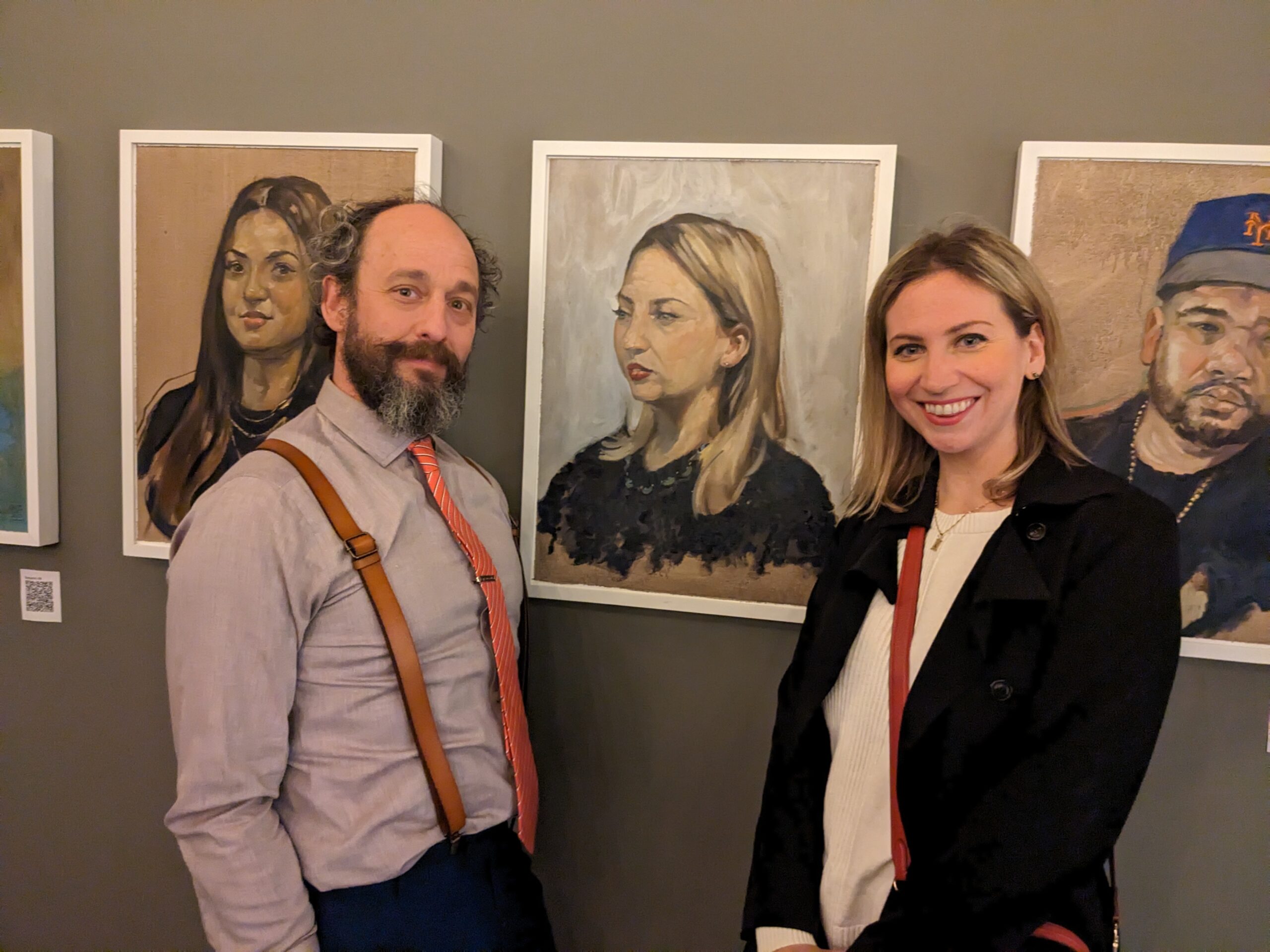
From left, Zimmerman with Kelly Autumn Carroll, flanking her portrait at Fort Hamilton Distillery (Courtesy Rusty Zimmerman)
A portrait of one’s own
Each portrait session takes about four hours, though Zimmerman promises plenty of breaks. At the end of each sitting, the artist leaves his subjects with a task. This varies depending on the conversation and, where possible, connects subjects whose only obvious connection thus far is having participated in the Free Portrait Project.
One of his subjects, Shane O’Donoghue, of Bay Ridge, griped about only ever fielding complaints in his job clerking for the second appellate division of the federal court downtown, and so Zimmerman tasked Kelsey Kleiman of Kensington to visit him at his workplace one day with good news. Bring him flowers, he suggested, even offering Kleiman some money to purchase the flowers.
Zimmerman, who is truly a one-man-show, organizes everything from securing funding to editing audio to finding locations throughout the year to exhibit the portraits. He doesn’t do a ton in the way of marketing. Many of his subjects learned of the project through word of mouth. “I make announcements at community board meetings and do outreach with city council members to make sure the word gets out to everybody, everybody, and not just the folks who happen to follow me on Twitter,” says Zimmerman.
Lakeisha Bowers, 47, a community board member who lives in Coney Island, calls the opportunity to have her portrait painted “a great honor.” Although Bowers, who has lived in Coney Island for 24 years, admitted to feeling nervous when she first arrived for the session, she says Zimmerman quickly put her at ease. “We talked, and it was more of a conversation on what I love to do.”
“To have someone sit and listen, and actually draw who you are … it was amazing. And it looks just like me,” Bowers says. Once the portrait is in her possession, Bowers says she plans to display it prominently. “As soon as anyone comes in, they’ll sit down and get to see my picture right there.”
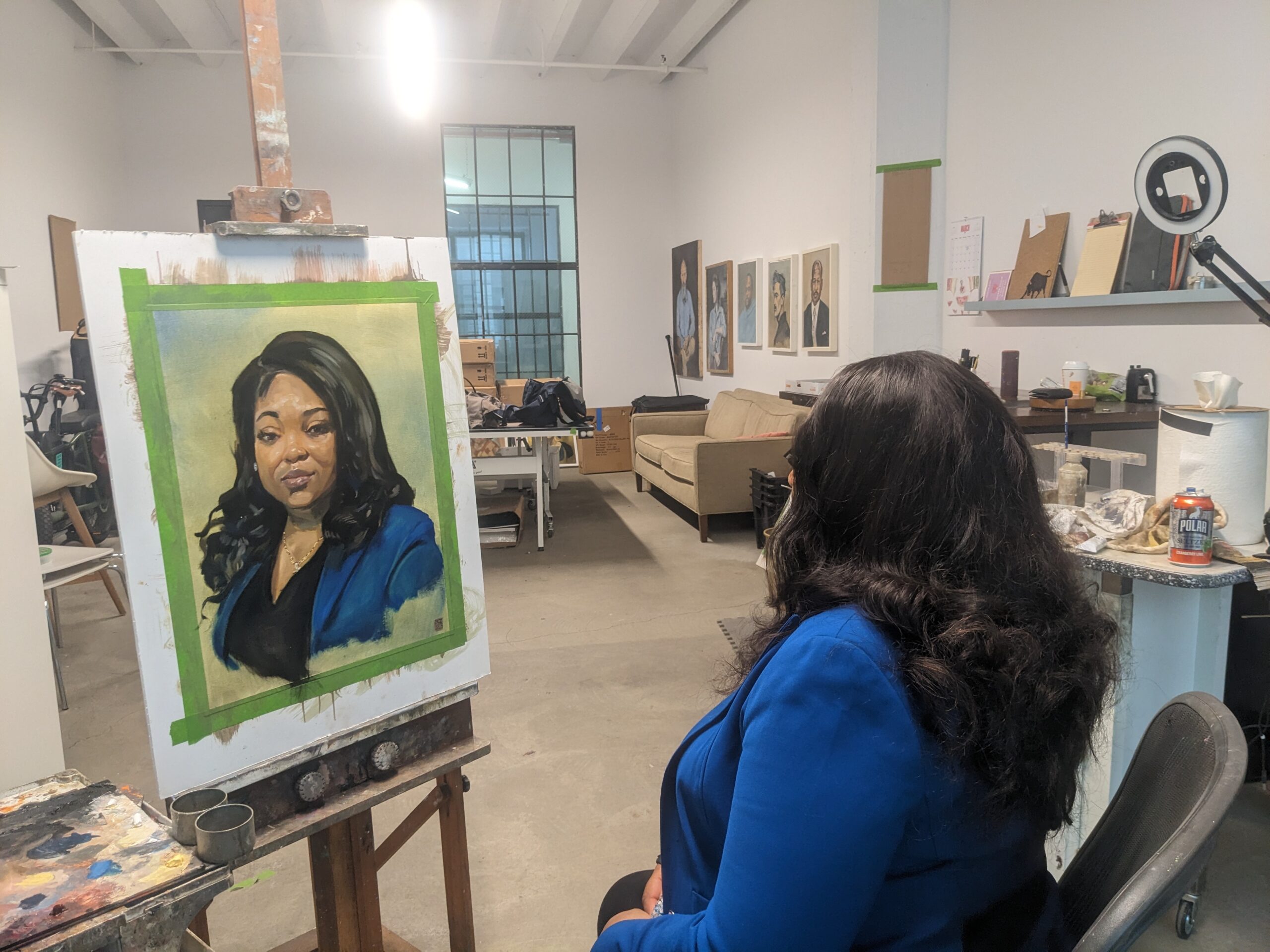

Bowers takes in her portrait (Courtesy Rusty Zimmerman)
‘Bigger than Paris’
Asad Dandia, 30, of Brighton Beach, heard about the project through a friend who works for the Brooklyn Borough’s President’s office. Like Bowers and Delva, he had never sat for a portrait before and says he was very curious to see how the picture would come out “because [Zimmerman] wanted to strike a conversation with me while he was drawing.”
Dandia, who works as a licensed New York City tour guide and for the Museum of the City of New York, says he can really see himself and his persona in the finished project which he says turned out “great.”
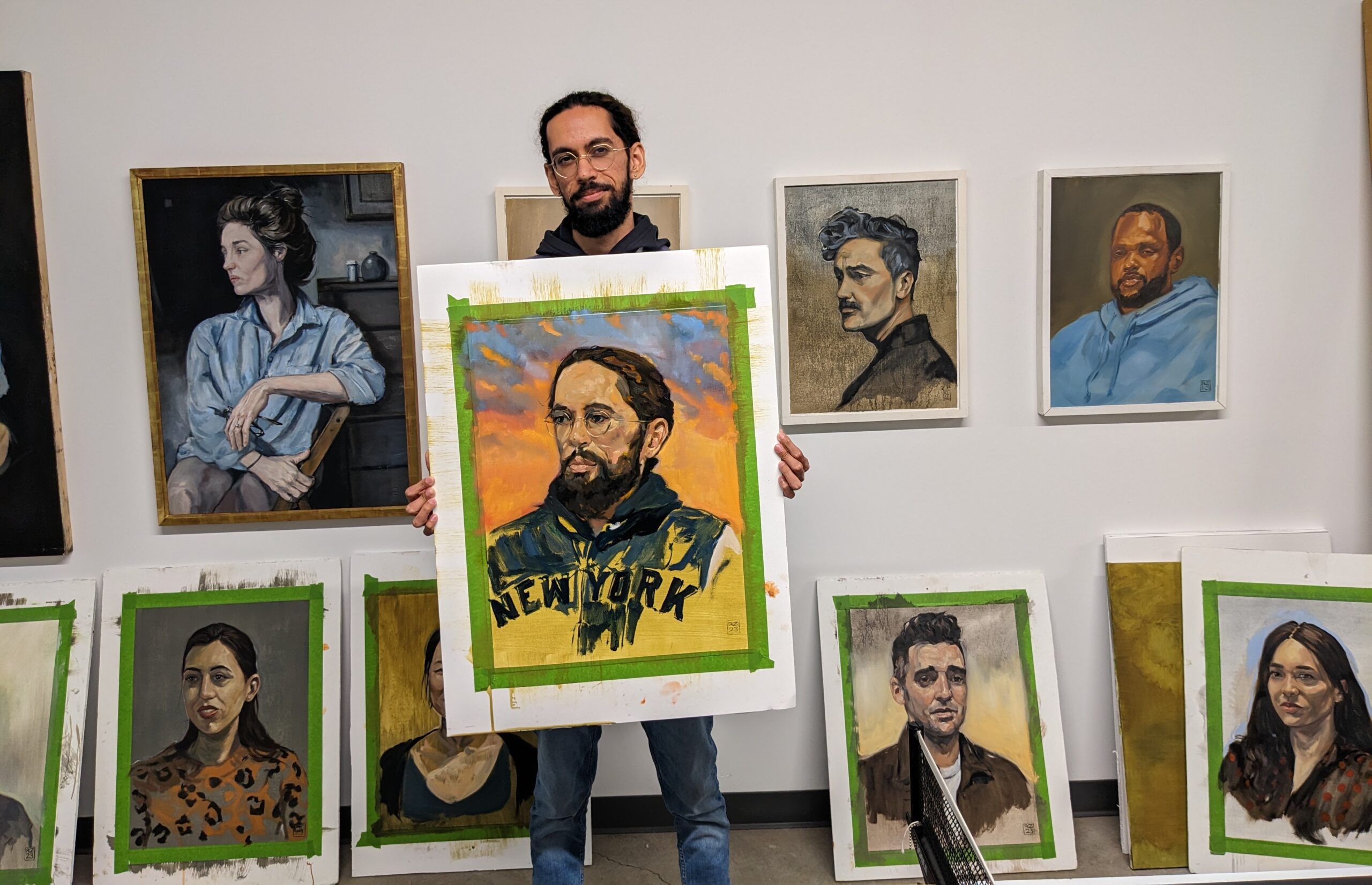

Dandia with his portrait (Courtesy Rusty Zimmerman)
Zimmerman’s subjects can wear whatever they want; Dandia purposefully chose a New York Yankees jacket when he sat for his portrait on a cold day in January. “I wanted to make sure that he got the New York part of the jacket right because I see that as central to my own identity.”
Not only did Zimmerman capture the details of the jacket, but Dandia was also impressed by the artist’s ability to paint the finer details from Dandia’s skin tone (his family is from Pakistan), his facial structure, right down to the small stud earrings and partial highlights in his hair. Dandia describes feeling flattered upon seeing the finished painting. “Here’s a guy who I just met. Taking all this care to draw me,” he says.
The fact that Zimmerman is zeroing in on parts of Brooklyn that most tourists — and locals, for that matter — rarely venture to is significant. “When you talk to most people about Brooklyn, what do they think of?” Dandia asks. “Williamsburg, Dumbo, that famous Instagram photo under the Brooklyn Bridge.”
Dandia sees this project as changing the discourse of how we think and talk about Brooklyn, the city’s most populous borough, which Dandia points out is “bigger than Paris.”
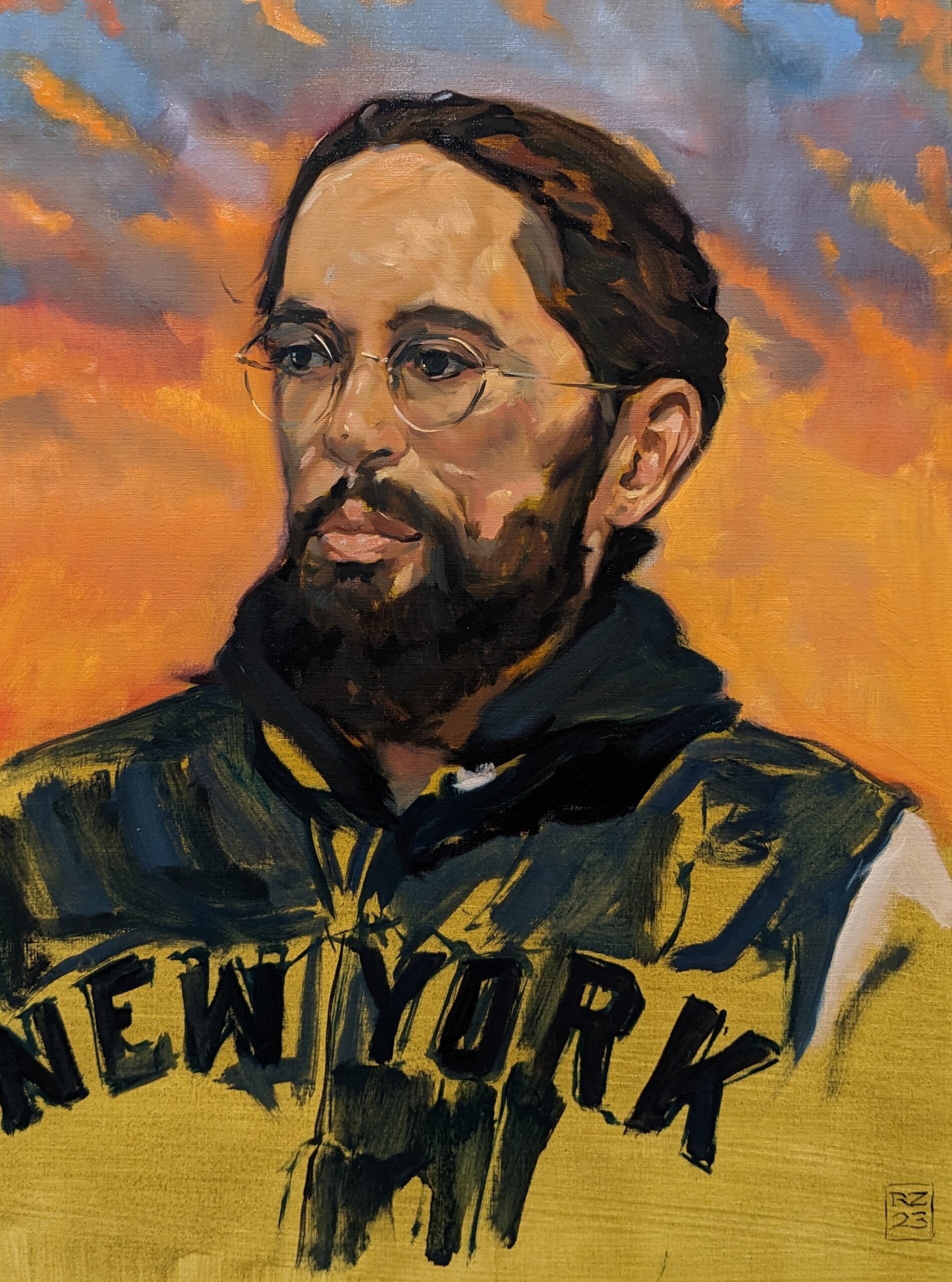

Dandia in his Yankees jacket (Courtesy Rusty Zimmerman)
You might also like 

















